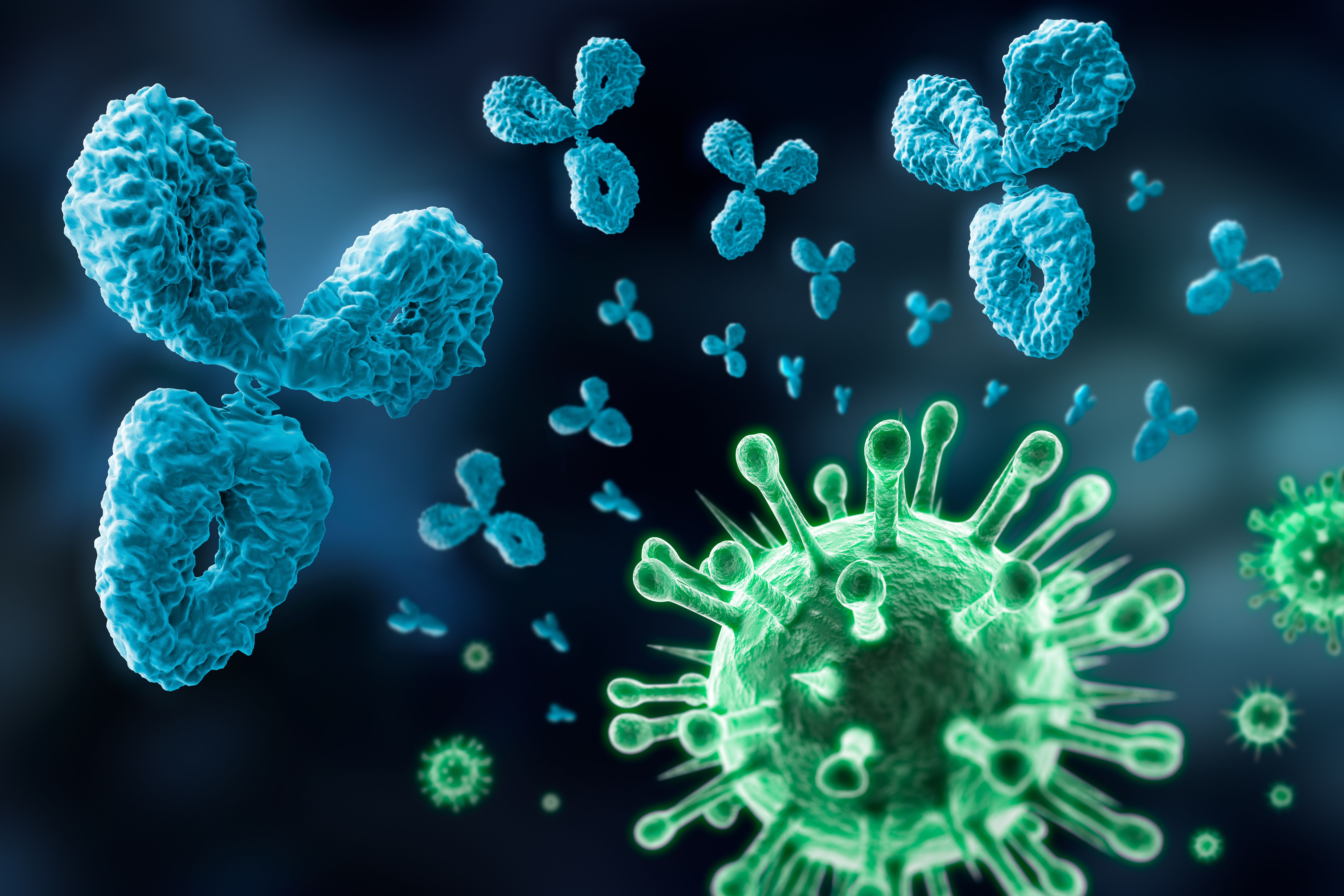New Antigen-Bonding Fragment System Developed for Autoantibodies
In a recent study out of Leiden University Medical Center and the University of Utrecht in the Netherlands, scientists developed a new system for analyzing antigen-specific antigen-binding fragments (Fab), to help better understand human autoantibodies. Their findings were later published in Nature Communications (1).
Antikörper und Viren | Image Credit: © peterschreiber.media - stock.adobe.com

Antibodies are vital in protecting a host organism from pathogens. To provide protection in specific and tunable ways, antibodies harbor highly variable regions in Fab. This variable domain is initially generated by recombining variable (V), diversity (D) and joining (J) gene segment; during this process, nucleotides are deleted, while palindromic and non-templated nucleotides are inserted at the junctions of the assembled gene segments. When combined with somatic hypermutation of the variable domain upon antigen encounter, these processes may create billions of unique antibodies, including various clones that can bind the same antigens. To prevent antibody formations that target the body itself, also known as autoantibodies, various tolerance mechanisms, which identify autoreactive B cell clones and exclude them via clonal deletion or variable domain editing, are employed.
If these tolerance mechanisms fail, this can ultimately lead to autoimmune diseases, which are currently estimated to affect approximately 1 in 10 individuals. As a result, there have been studies investigating how autoantibodies are associated with disease development, progression, or treatment. However, current insights into the extent of autoantibody repertoires are lacking, mostly due to the limitations of currently applied technologies. In response to this, the scientists introduced a liquid chromatography-mass spectrometry (LC-MS)-based Fab profiling approach for studying plasma antibody repertoires at the protein level with molecular resolution. This method selectively generates IgG1 Fab fragments from affinity enriched plasma IgG and analyzes Fab molecules via LC–MS. According to the scientists, this approach helps in “resolving the diversity of polyclonal antibody mixtures and repertoires based on the unique mass and retention time of each Fab molecule” (1).
When this approach was applied, it was revealed that plasma and virus-specific IgG1 repertoires are unique and polyclonal, with few clones showing particularly high abundances. This diversity against infectious agents may differ from those of autoreactive antibody repertoires because of the exclusion of autoreactive antibody clones by tolerance mechanisms, as well as the different nature of and context in which autoantigens may be recognized. The scientists also introduced in-depth autoantigen-specific Fab profiling and resolve an autoreactive plasma antibody sub-repertoire at the molecular level, using the prominent autoantibody response of anti-citrullinated protein antibodies (ACPA) as an example.
According to the scientists, each patient harbors a unique and diverse ACPA IgG1 repertoire, which is dominated by a few antibody clones. However, unlike total plasma IgG1 antibody repertoires, the ACPA IgG1 sub-repertoire can be characterized by an expansion of antibodies that can harbor Fab glycans and detect different glycovariants of the same clone. Altogether, the scientists’ data indicated that the autoantibody response in a prominent human autoimmune disease is complex, unique to each patient, and dominated by a relatively low number of clones. More research must be conducted, but this can potentially open way for similar studies and findings that can help prevent and fight autoimmune diseases.
References
(1) Stork, E. M.; van Rijswijck, D. M. H.; van Schie, K. A.; Hoek, M.; Kissel, T.; et al. Antigen-Specific Fab Profiling Achieves Molecular-Resolution Analysis of Human Autoantibody Repertoires in Rheumatoid Arthritis. Nat. Commun. 2024, 15, 3114. DOI: 10.1038/s41467-024-47337-x
High-Speed Laser MS for Precise, Prep-Free Environmental Particle Tracking
April 21st 2025Scientists at Oak Ridge National Laboratory have demonstrated that a fast, laser-based mass spectrometry method—LA-ICP-TOF-MS—can accurately detect and identify airborne environmental particles, including toxic metal particles like ruthenium, without the need for complex sample preparation. The work offers a breakthrough in rapid, high-resolution analysis of environmental pollutants.